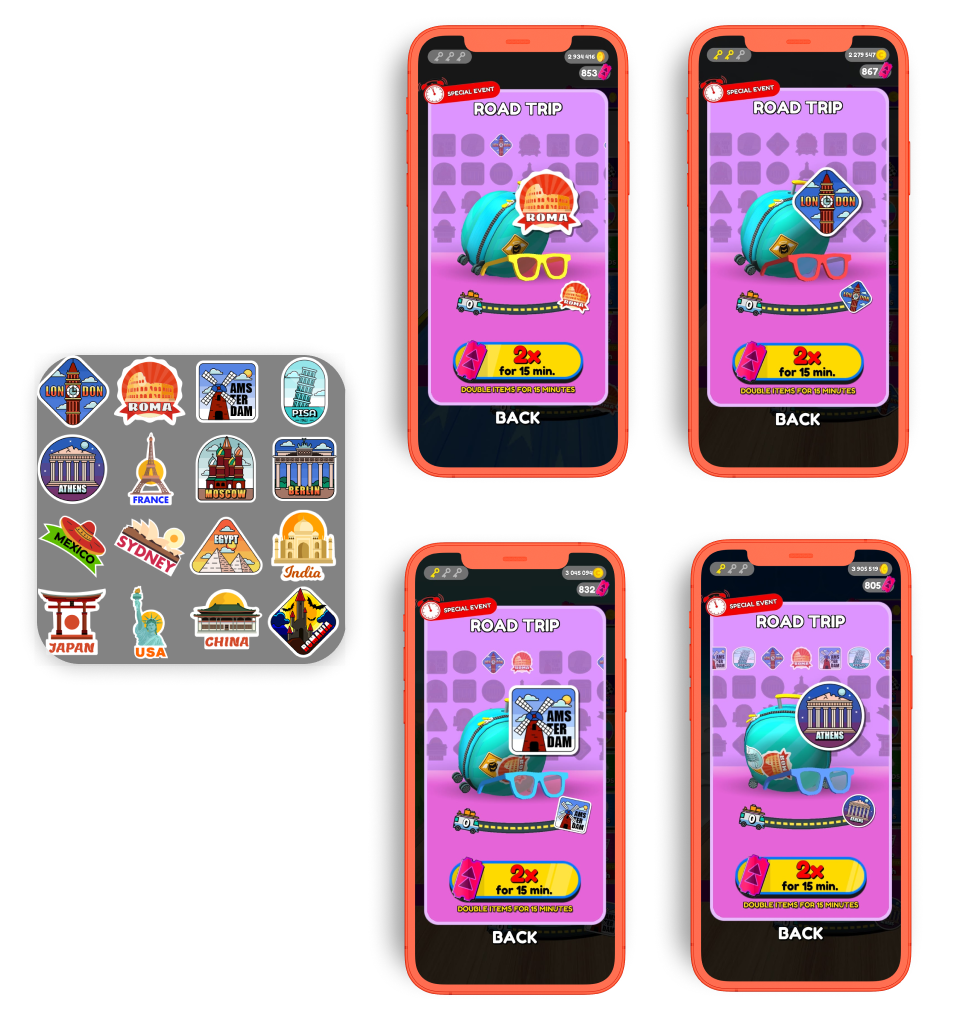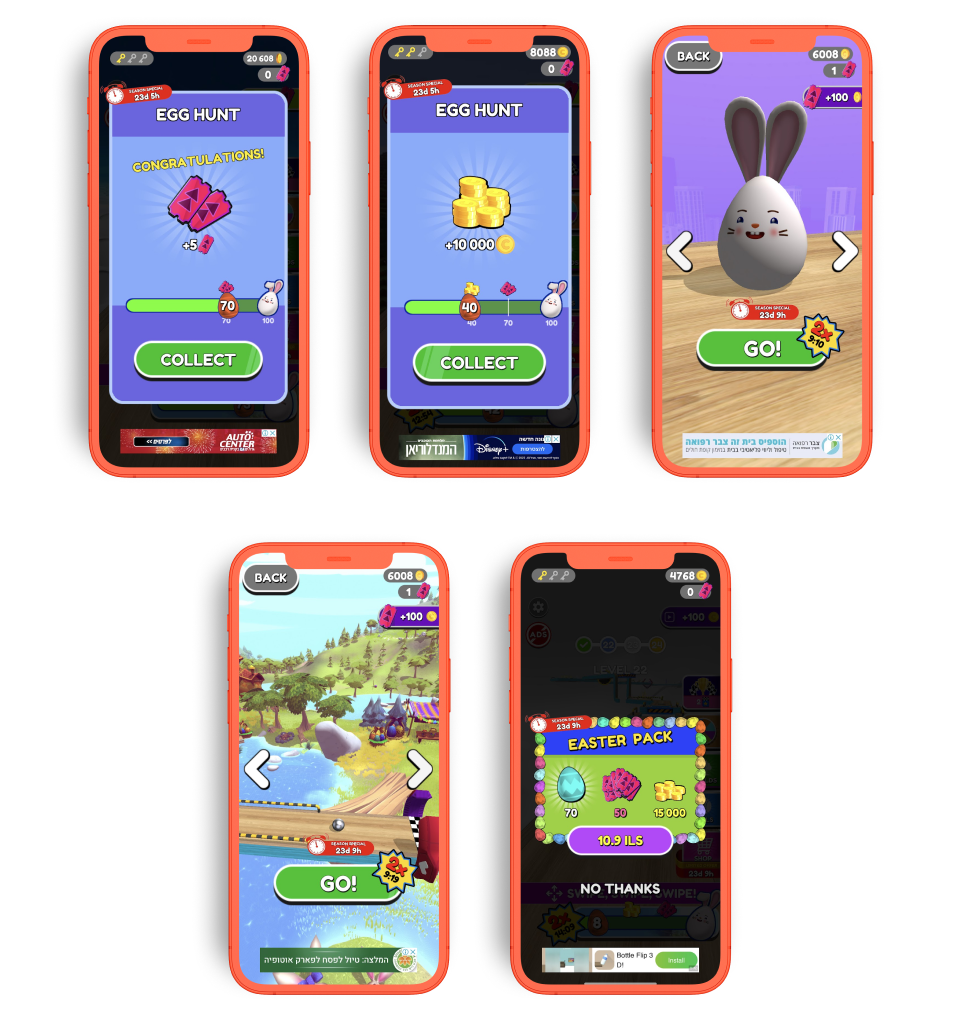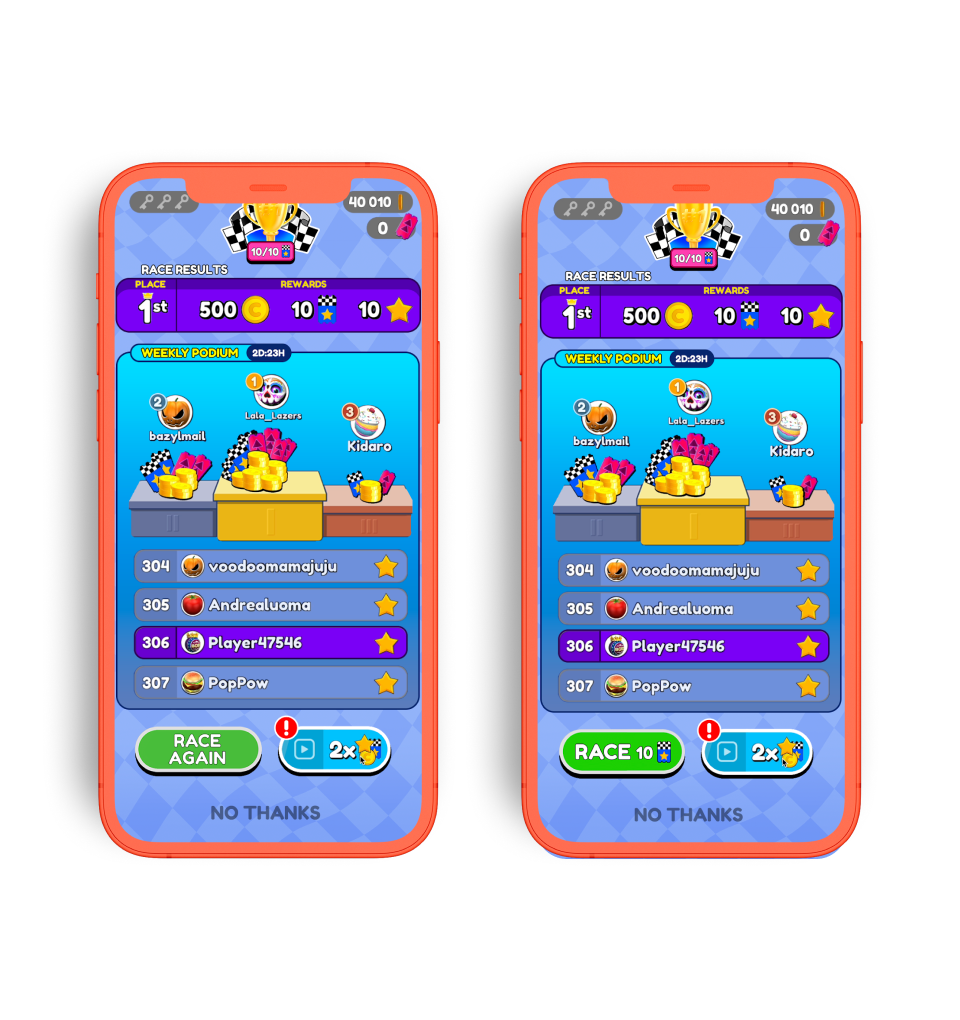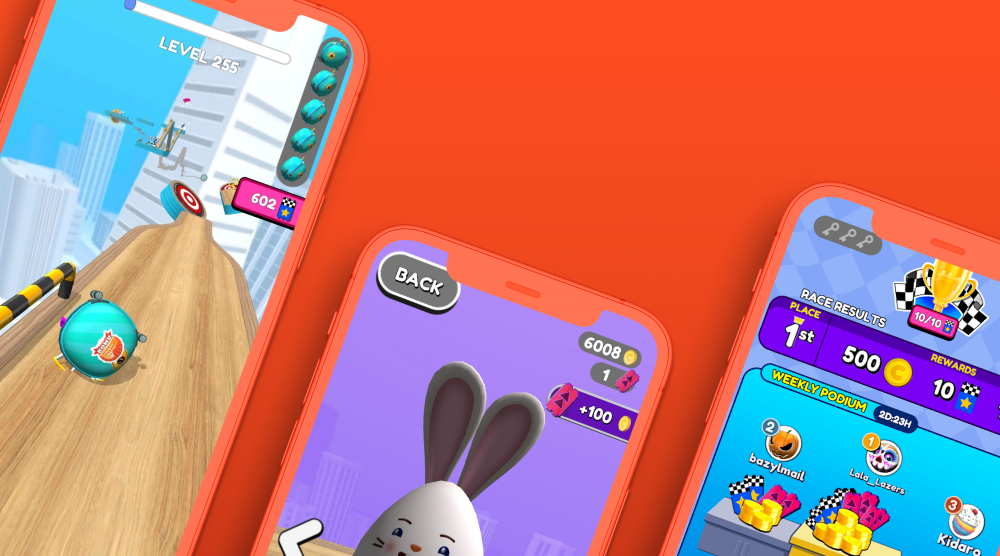Curious about how top hits from 4 years ago are still generating long-term revenue? In the first part of our blog series, we looked at how these hits have nailed marketability, generating a high number of downloads and allowing them to scale. Next up, we're diving into LTV, as we break down how Going Balls and Stacky Dash have continued to increase LTV over time.
Boosting engagement with new and deeper game features
Beyond nailing marketability and continuing to attract new players since their release in 2020, Going Balls and Stacky Dash continue to maximize revenue and keep bringing players back by adding fresh content, integrating deeper core gameplay features, and regularly testing their LTV strategies to optimize performance.
1. Powering up liveOps
Introducing limited-time liveOps events, such as weekend events, seasonal activities, or monthly series, can enhance the overall player experience and boost LTV. Even though these events are simpler than liveOps in casual games, they boost LTV by engaging players with a level of sophistication not typically found in classic hyper-casual games.
By integrating these in-game events, the Going Balls team has successfully increased LTV. For example, Going Balls continues to drive increased RV performance on weekends by running a “Road Trip” themed in-game event. Spanning several consecutive weekends when players have more free time, this event challenges them to find location-themed 3D items at various Road Trip destinations, offering an exclusive reward upon completion. To optimize performance, RVs that help players advance in the event are strategically placed in appealing locations in order to support their progression.
Since monetization in hyper-casual games mainly relies on ads, increasing playtime provides more opportunities to show ads, in turn boosting LTV. For Going Balls, the weekend Road Trip events are crafted to extend session duration and increase daily sessions, as well as enhance RV engagement rates, all of which contribute to higher overall playtime and improved LTV.

In addition to their weekend events, Going Balls nails seasonality with engaging gameplay that features limited-time themes, driving players to return. Their Easter event is a fan favorite, providing players with a limited chance to collect 50 eggs on the track in order to win an exclusive prize. With this in-game event comes Easter-themed creatives, a fresh new background, and opportunities for players to make special in-app purchases.
For Going Balls, seasonal events have led to an overall increase in engagement, including an 4% increase in DAU, a 6%-16% boost in RV engagement, and a 10% increase in ARPDAU. Additionally, a combination of liveOps events, including weekend events, seasonal events, and monthly events have resulted in a 10% increase in revenue from long-term players (those active from 181 days or more).

2. Introducing meta features
In addition to liveOps, integrating meta features can help improve retention and monetization, helping to sustain high ARPDAU for both new and existing players.
In the 4 years since Going Balls was released, its developers have demonstrated an unmatched commitment to the ongoing development of their game. They live, eat, and breathe new strategies for increasing engagement. During the past 4 years, they’ve rolled out a number of updates, including new ball designs, refreshed backgrounds, and the integration of meta layers to enhance gameplay depth.
Though Going Balls’ core gameplay is the same as when it launched in 2020, the addition of multiple new meta layers has paid off. Deeper gameplay features, optimizations, and new challenges all reflect the developers’ commitment to continually boosting long-term LTV.
For example, Going Balls developers integrated a racing feature designed to improve retention where players can race and compete against other players. Following the integration of this meta layer, additional optimizations were made to improve the user experience for engaged players. Now, players can seamlessly start a new race immediately after finishing the previous one, without needing to return to the main menu. This streamlined flow enables highly engaged players to remain immersed in the game for longer periods.

The Going Balls team incorporated additional meta features to enhance tournament experience, like adding a limited-time leaderboard with a unique ball prize, which encourages players to complete more races in order to improve their ranking. This competitive element not only can boost engagement, it can also help increase LTV.

Stacky Dash developers have also successfully added deeper meta layers to their game that have helped boost LTV. Their zoo meta is a perfect example, where players get to collect a different zoo animal every time they complete two levels in a row.

After implementing zoo-themed meta, Stacky Dash developers saw an uplift in D7 ARPU of 19%.

3. A/B testing ads
In addition to adding in-game events and deeper core gameplay features, regular A/B testing during the first few years after a game's launch can help boost LTV by 10-12%.
Effective A/B testing of interstitials should include:
- Determining the optimal trigger points for interstitials (before or after the end-level screen)
- Assessing the ideal frequency for displaying interstitials
- Evaluating the impact of implementing offline gameplay
Going Balls is a great example of this. Four years in, and the team is running even more tests than when they first released the game. They also have specialists focusing on how to optimize ad strategies, identifying the most effective ways to implement RVs and interstitials.
By regularly A/B testing the timing and frequency of their ads using the Supersonic A/B testing tool, the Going Balls team found that shifting ads from the middle of a level to the end of each level significantly optimizes ad performance.
The Stacky Dash team also regularly conducts A/B tests on their interstitial ads to determine the optimal timing and frequency. Initially, at game launch, the setup included displaying three ads per level. As the game evolved with deeper content, including meta features, the team decided to retest a more forgiving ad frequency. By reducing the number of interstitials to just one per level, they successfully boosted late-stage player retention, which in turn impacts LTV.
It's crucial to continuously retest interstitial behaviors as the game evolves over time to find the ideal setup that balances between revenue and churn at every stage of the game.
There's a lot more to dive into when it comes to generating long-term revenue. Want to know more about how top games have mastered marketability over time? Check out the first part of our series:
How megahits use creatives to keep long-term revenue rolling in - Part 1
Let's put these tips to good use
Publish your game with Supersonic



